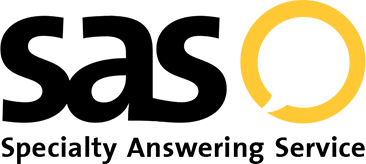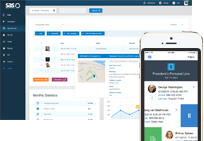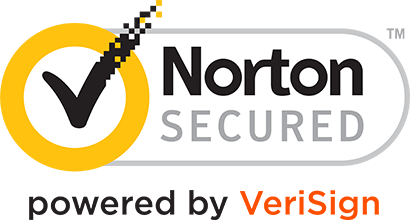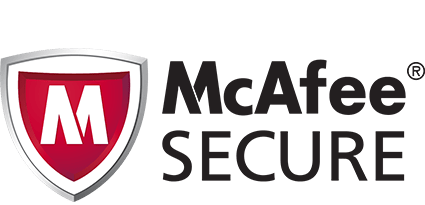- Log In
- Support
- Company
- Contact Us
- Live answers @ 1-888-532-4794
The Ultimate Answering Service Pricing Guide

If you’re thinking of outsourcing call handling to an answering service, or if you’re already using a call center but wondering if you selected the best service for your budget, then reading this comprehensive guide to answering service pricing should move to the top of your to-do list.
With the right call center on your side, you can invest time fostering relationships with existing customers without missing opportunities to qualify new leads. The easy part is making the decision to work with an answering service. The hard part is knowing which one to choose. Not only are there innumerable call center companies, but there are also different pricing models that, at first glance, may be a bit confusing. In “The Ultimate Answering Service Pricing Guide,” we’ll review four pricing models, their benefits and downfalls, which types of accounts may work best with each, and a list of the potential charges that you may incur. Let’s get started!
- 4 Basic Pricing Models: Learn about Per-Call, Per-Minute, Flat-Rate, and Pay-As-You-Go pricing models.
- Benefits & Downfalls: Depending on which pricing model meets your needs, each structure has pluses and minuses.
- The Value in Cost-Effective Design: Learn how to cut costs while making the most of your call center experience.
- Standard Fees & Up-Charges: Review the standard fees and potential charges associated with your service.
- Buyer Beware: Less isn’t always more. Do your research before going with an ultra low-cost service.
- Billing Considerations: Be informed about topics such as contracts, how often you’ll be invoiced, and more.
- Cancellation Process: In case you ever need to leave service, be sure to carefully review the cancellation terms.
- Conclusion: Breeze through a quick re-cap of key points, and you’ll be on your way to finding your ideal service!
4 Basic Pricing Models
The first thing to know about call center pricing is that there are four pricing models to choose from: Per-Call, Per-Minute, Flat-Rate, and Pay-As-You-Go. They are all relatively different and will have pluses and minuses, depending on your needs. Read on for a brief description of each model along with typical base-rate pricing and supplementary fees.
Per-Call Pricing
Billing for per-call plans is based on the quantity of inbound and/or outbound actions on your account. An action may consist of inbound and/or outbound calls, inbound and/or outbound texts and emails, daily reports, paging, faxes, call wrap-up time, etc. The length of the call is not taken into consideration but rather the sheer volume of actions during each billing cycle. While it may sound simple, it’s not as straightforward as you might think. In fact, if you look at everything that you might be charged for, it can be pretty tricky.
With per-call services, their goal is to process each call in under a minute to maximize profits. The easiest way to do that is to take nothing more than a basic message. That generally means Name, Number, and Regarding. Anything more complicated than that, e.g., a reach on-call schedule, warm transfers, or having the operators answer FAQs, is going to cost you. And there are some things you just can’t do with per-call such as order taking, website navigation, etc.
Typical Pricing: With some per-call plans starting as low as $19, base rates may or may not include a set number of call counts per billing cycle. Overage fees are assessed for each action if your base rate does not include any calls or when you exceed the cost-effectiveness of your selected plan.
Overages: While overages can range anywhere from $0.45 to $1.75 per action, most seem to fall between $0.65 and $0.85. Overage fees are inversely correlated to the cost of the plan. As the plan increases, the overage fee decreases.
Expected Add-On Fees: In addition to overage rates, per-call accounts often have incremental fees that may be assessed for items such as: changing on-call personnel, email and text notification, temporary status updates, call reports, auto announcements, initial programming, script modifications, call transfers, holiday fees, etc. For example, if you dial your forward number to make a last-minute on-call switch, you will likely be charged a call count for the call you placed along with an “If” charge and a “Locate” charge: If there is an emergency, Locate a different on-call tech.
Usage Case:
- $150 for 200 calls
- $0.70 for each overage
- $0.50 for each message delivered on each call
- 250 calls with 2 texts and 1 email on each call
- TOTAL: $560
Per-Minute Pricing
The key to per-minute pricing is that any inbound or outbound calls are billed in increments. The service you select may bill in 1-second, 8-second, or 15-second intervals, they may have a 30-second or 1-minute minimum per-call, etc. Accrued time includes any time that the operator is engaged in some part of the call. This includes speaking with the caller, placing them on hold, transferring calls, entering wrap-up notes after the caller has disconnected, and contacting on-call staff. For example, the operator may speak with the caller for 1.5 minutes, and it may take him 45 seconds to document details or 3 minutes to get ahold of an on-call doctor. This is all included in live-operator time.
The best-case scenario is finding a service that bills by the second. Service providers that are offering per-minute plans may or may not include additional actions, such as text and email notification, in your base rate. In that case, each action may incur a separate fee.
Typical Pricing: Just as with per-call pricing, per-minute base rates may or may not include a set number of minutes per billing cycle. Overage fees are assessed per minute if you are on a basic plan that does not include any minutes or for exceeding the usage threshold of the plan you select.
Overages: Fees will vary depending on the allotted minutes. On average, they range from $0.90 to $1.20 and are also inversely correlated to the plan price.
Expected Add-On Fees: Per-minute accounts may have similar incremental fees to per-call accounts such as programming, patch minutes, IVR, etc. In most cases, there are less add-on fees for per-minute accounts than per-call.
Usage Case:
- $150 for 200 minutes
- $0.70 for each overage
- Message delivery included
- 100 calls @ 3-minutes average = 300 minutes with 2 texts and 1 email on each call
- TOTAL: $220
Flat-Rate Pricing
Flat-rate pricing can be cost-effective or a budget-breaker, depending on how steady your call volume is. In some respects, it is like per-call or per-minute pricing where you are paying a base rate for a package of calls or minutes. The difference is that there is no overage rate. There may be a handful of services that offer a truly flat rate no matter your call volume. However, in most cases, flat-rate pricing means that once you reach a plan’s threshold, you are automatically bumped up to the next plan. For example, if you pay $100 for 125 minutes, and you reach 126 minutes, your plan will increase to the next pricing tier, e.g., $200 for 250 minutes. That means you may wind up paying a considerable amount more for only minimal overages.
Typical Pricing: Flat-rate pricing can vary widely depending on the plan you select, so it’s best to have a good idea of your average call volume before you make any decisions.
Overages: While some services may say that they are charging a flat rate, if they are also advertising overage fees, then it is more likely per-call or per-minute billing.
Expected Add-On Fees: Pricing for simplified flat-rate service likely only covers the actual calls or minutes included in the plan you select. While flat-rate plans may offer features such as call transfers, appointment scheduling, etc., you will pay a premium for those services.
Usage Case:
- $150 for 200 minutes
- No overage – automatic upgrade to next plan at 300 minutes ($250 for 300 minutes)
- $0.50 for each message delivered on each call
- 100 calls @ 3-minutes average = 300 minutes with 2 texts and 1 email on each call
- TOTAL: $400
Pay-As-You-Go Pricing
Pay-as-you-go pricing works a lot like a prepaid mobile phone. You add a “credit” to your account, and then each time you receive a call, funds are deducted from your balance. This requires money up front, but it is different than some answering service economy plans where you pay a base rate to keep the line open and active, plus a fee per-call or per-minute. Generally, the fee for each call or minute is inversely correlated to the amount of credit you add to your account. The more credit you add, the less individual transactions will cost.
Typical Pricing: Providers have tiered amounts of credit that you can add, e.g., $20, $50, $100. Depending on how much you prepay, the actual amount deducted for each call or minute will vary.
Overages: Be sure to read the fine print, and ask a few questions: Will the account be automatically replenished each month or once you reach a certain level of remaining credit? Does any unused monthly balance roll over to the next month, or is it a use-it-or-lose-it policy? What about line charges or costs for message delivery? It is important to do your homework to avoid any surprise fees.
Expected Add-On Fees: Pay-as-you-go service is strictly a message service, and advanced features will not be offered.
Usage Case:
- $150 credit
- $1.00 per call
- $0.50 for each message delivered on each call
- 2 texts and 1 email on each call
- TOTAL: 60 calls if balance can zero out; 52 calls if you are required to maintain a $20 credit
Benefits & Downfalls
If you aren’t sure which pricing model is the right fit for your needs, then peruse the table below for an at-a-glance view of the benefits and downfalls of each model. That should help you narrow things down.
Ideal For
- Per-Call: Businesses that tend to have lengthy calls
- Per-Minute: Fits most businesses regardless of call volume
- Flat-Rate: Businesses that have around the same number of calls each month
- Pay-As-You-Go: Businesses that are new, unsure of expected usage, or have a limited budget
Benefit
- Per-Call: Call length is not a factor. So, a call could last 10 minutes, and you would only incur 1 call count. If you stay within your call allotment, your bill will be relatively the same each month.
- Per-Minute: Billed in short intervals. So, wrong numbers, hang ups, etc. will not accrue much usage. If you stay within your minute allotment, your bill will be relatively the same each month.
- Flat-Rate: If you stay within your plan allotment or you have a truly flat-rate plan, your bill will be the same each month.
- Pay-As-You-Go: You don’t have to keep tabs on usage or worry about call volume. This allows you to stay within a budget that you can afford.
Downfall
- Per-Call: If your call center charges for short calls such as wrong numbers, hang ups, prank calls, etc., then each of these will count towards your usage, even if they only last a few seconds.
- Per-Minute: Sudden spikes in call volume can push you past your allotted minutes, resulting in significant overage charges. At the same time, if you don’t use all your minutes, you could be wasting money.
- Flat-Rate: If you exceed your plan, you may be upgraded to the next plan rather than paying for each overage. This could wind up costing you a lot more than you anticipated.
- Pay-As-You-Go: If the account is automatically replenished when the balance is low, and the payment method on file is not viable, your line may be disabled.
Service Tips
- Per-Call: Add your land line or cell phone number to the National Do Not Call Registry. Stop robocalls by adding an IVR to your line, which requires callers to press a number to reach an agent.
- Per-Minute: Look for a service that gives you on-demand access to your usage or the ability to adjust your rate plan within the current billing cycle.
- Flat-Rate: Track your call volume before choosing a service. This will help to determine the correct plan and eliminate any surprises on your bill.
- Pay-As-You-Go: Keep your credit account in good standing, and remember to update payment information if your card number or expiration date changes.
The Value in Cost-Effective Design
Every good business owner is concerned with the bottom line. So, when you reach the point where you’re ready to outsource, construct your call center services to meet your needs without breaking the bank. Depending on which pricing model you select, there are always ways to reduce costs.
- Keep your call script simple. The fewer questions the operators have to ask, the less time they’ll be on the call.
- Limit the number of on-call contacts, and opt not to leave a voicemail on unsuccessful attempts.
- If you have multiple employees who need to receive messages, set up a distribution group email. That way, you will only be charged for one message.
- Request a weekly call report rather than a daily account.
- Monitor your call volume, and adjust your plan as necessary to ensure that you are not paying too many overage charges or paying for calls or time that you aren’t using.
- Forward your calls after-hours rather than 24 hours.
- Set your line so that it rings a few times before forwarding. It will only roll over to the service if you are not able to answer.
- Add a frontend IVR to your line to eliminate automated calls.
- Circumvent programming charges by looking for a service that will give you the ability to make your own scripting or on-call schedule changes.
- If you have a strict monthly budget, review your usage regularly, and unforward your calls when you’ve reached your limit.
- Save time by not having the operators verify the information they are gathering from your callers.
- Reduce call counts, call time, or line charges by utilizing a cold transfer instead of a warm transfer.
- For appointments, have operators schedule but only take messages for canceling or rescheduling.
- If you are using a service for after-hours emergencies, include language in your upfront greeting letting callers know that the line is for emergencies only, and all other callers should contact the office during business hours.
Standard Fees & Up-Charges
Certain fees are common in the call center world, e.g., paying for toll-free numbers, sub account rates, programming costs, and auto attendant fees. While your provider should be transparent about pricing from the get-go, it would behoove you to do your homework before you become an active client. In other words, read the fine print.
Here is a list of potential fees that you’ll want to explore for any call center on your short list. Aside from a Set-Up Fee, which most services will charge, the items listed below may or may not be included with your plan, and thus, may result in additional fees.
| 24-Hr/After-Hours* | Appointment Setting | Auto Attendant | Bilingual Service |
| Call Recording | Frontend Greeting | HIPAA Compliance | Holiday Rates |
| ISO Certification | IVR Time | Local Number** | Message Delivery |
| Mobile App | Multiple User Access | On-Call Schedules | Order Taking |
| Overages | Patch Time | PCI Compliance | Programming |
| Queue Time | Script Access | Sub-Account | Third-Party Software |
| Toll-Free Number** | Usage Reports | User Interface | Voicemail |
* Per-call or per-minute rates may increase after-hours.
** Line charges may be billed annually, semi-annually, or monthly, as opposed to a one-time fee.
Buyer Beware
Beware of ultra-low-cost plans – anything under $0.70. If you aren’t a high-volume customer (which would warrant a low rate), then here are a few things to keep in mind:
- The service might be as low-quality as the cost of the plan, and they may offer flexible rates because they are desperate for business.
- It might be a small service (e.g., run out of someone’s home) or a service that is not scalable or able to handle your call volume.
- Calls may be outsourced overseas, which is cheaper for the call center, but not necessarily the right fit for you.
- You may be charged a hefty sum for every account action. For example, if you sign up for a plan that says it’s a $15.00 flat rate but you are paying $2.00 per minute, then the plan is not nearly as economical as you thought.
- There may not be a direct contact person, account representative, or support team whom you can call for assistance with changes or if any issues arise.
Billing Considerations
If you are taking advantage of a free trial, then your answering service should not require any billing information until after the trial period ends, and you become an active client. At that point, you’ll submit a billing authorization, and the customer support or accounting department will explain the invoicing process so that you have a solid understanding of how you will be charged going forward. When it comes to billing, there are few questions to ask.
Is there a contract?
Many services offer month-to-month billing, so there is no need to sign up for a specific, contracted length of time. If your provider requires a contract, read it carefully, and be aware of the ramifications should you need to cancel service.
What are the payment terms?
This one can be a little tricky. Let’s say that you sign up for a service advertising a low monthly cost. Depending on the payment terms, that cost may not be as low as you think. Here’s what we mean by that. If your premium is $20 per billing cycle (typically thought of as a month), and your service has 28-day terms, then you will receive 13 invoices annually. Therefore, you’ll pay for a full month more than you had anticipated. The moral of the story is, ask about the payment terms before you move ahead.
What if I go over my minutes / calls?
Depending on the service provider, exceeding the usage threshold for your selected plan may result in an upgrade to the next most cost-effective plan. For example, if a 100-call plan is cost-effective to 150 calls, and you exceed 150 calls, you may be automatically bumped up to save you money. Other providers may simply calculate your overages based on the quoted rate for your plan, which could end up costing you more than a plan upgrade.
Can I switch plans?
If your need for call center services is seasonal, such as with landscapers, tax accountants, roofing contractors, or pledge drives, there will be peaks and valleys in your call volume. Look for a service that will allow you to downgrade plans during slow months. Seasonal businesses aren’t the only ones whose call volume may vary, though. In any given month, if it appears that your usage is considerably lower than your plan allows, ask if your provider will allow you to downgrade your plan within the billing cycle to save you money.
Cancellation Process
And last, but not least, find out about the cancellation policy. Here are few key questions to ask:
- How many days’ notice is required to cancel?
- If you are month-to-month and you cancel in the middle of a billing cycle, are there cancellation penalties, or will you receive a prorated credit for unused funds?
- If you are under contract, what happens if you discontinue service prematurely?
- If you pay for your plan’s base rate in advance, will the next month’s base rate be refunded upon cancellation?
Ideally, your answering service will continuously meet or exceed your expectations, and you won’t want or need to cancel your account. However, it’s better to be informed just in case things don’t go as anticipated.
Conclusion
No matter what type of call center services you are in search of, you can be certain of one thing – research is the key to ensuring that you are getting everything you need at a price you can afford. While providers will often have similarities in their plans and billing approach, they will also have policies that are unique to their organization. Be sure to ask a ton of questions during the sales process, and clear up any questions you have about billing before you convert from a trial customer to an active client.
Nearly all the questions above should be plainly outlined in your call center’s Terms and Conditions, which, if we’re being honest, most people don’t read… So, take the time to go through those line-by-line. Spending a few minutes reviewing the terms at the start can save you from billing headaches down the road. And remember, you signed up for an answering service to make your life easier. Stay informed, and be proactive about tailoring the service to your needs. In turn, you’ll watch your business grow, one call at a time!
Categories
- Advice (32)
- Answering Service 101 (18)
- Best Practices (10)
- Call Center Jobs (6)
- Call Center Software (20)
- Comparison (2)
- Customer Service (30)
- Funny (31)
- Holidays (19)
- Industry Hacks (19)
- Infographics (53)
- International (1)
- Medical (8)
- News (12)
- Phone Etiquette (2)
- Phones (14)
- Pricing (8)
- Quizzes (3)
- Receptionist (11)
- SAS Products (29)
- Scripting (4)
- Services (5)
- Small Business (25)
- Starting Up (7)
- Tips and Tricks (19)
- Uncategorized (1)
- Videos (19)
- Workplace (6)
Recently writen
- Call Center Script Best Practices: Advanced Script Block Tips to Optimize Your Answering Service
- January 2025 Release Notes – Adjustments to Call Details Timeline, New Scripting Updates, Live Transcription, and more!
- April 2024 Release Notes – Voicemail Greetings, Ability to Access Websites With a Username and Password, and more!
- March 2024 Release Notes – New Add-On, Settings Revamp, and more!
Follow Us
How about a demo?
We'll show you how our web portal works and answer any questions you have about SAS.
Schedule a demo







